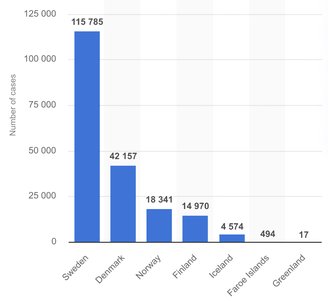“…herd immunity is something that can be observed with certainty only by analyzing the data in retrospect.”
— Caitlin Rivers, Johns Hopkins’
epidemiologist
###
“Focused Protection” or “Mass Murder”? The recent “Great Barrington Declaration” came about as a result of a libertarian think tank finding a few maverick doctors. Focused Protection (their phrase—Mass Murder was the NYT’s clickbait headline) proposes an approach to Covid-19 that “balances the risks and benefits of reaching herd immunity.” The idea is “to allow those who are at minimal risk of death to live their lives normally to build up immunity to the virus through natural infection, while better protecting those who are at highest risk.”

New York Times, 10/19/20
So much magical thinking here! Let’s start with the notion of herd immunity itself (which should really be called “herd protection”), loosely defined as the point at which a virus stops spreading because so many potential victims are protected against infection. With no one to infect, goes the theory, it dies out. The phrase is frequently used with vaccination programs: if, say, 90% of folks have been vaccinated against a virus, the other 10% are automatically protected—or at least, their risk of infection is very low—and the virus will eventually disappear. That 90% is the herd immunity figure. Trouble is, what works with mass vaccination doesn’t readily translate to natural immunity acquired from contracting, and surviving, the virus.
For one thing, a sizable number of people who get the virus don’t survive. As of October 27, nearly 9 million Covid-19 cases in the US have resulted in about 227,000 deaths, or 2.5%. Let loose on all 330 million of us, that 2.5% translates to over 8 million deaths. There went New York City. Or one fifth of California. Take your pick.
Secondly, surviving Covid isn’t a guarantee of lifelong immunity, and we’ve already seen a few recurring cases. The best bet — recognizing we know so little about this new virus — is that immunity probably lasts about a year before our antibodies “forget” what Covid-19 “looks like,” and those who were infected are back where they started. (That assumed 12-month immunity is based on other coronaviruses that we do understand, such as the ones responsible for the common cold.) According to Caitlin Rivers, quoted above, “If the people who are infected become susceptible again in a year, then basically you’ll never reach herd immunity.”
Thirdly, the whole notion of herd immunity depends on knowing just what the magic number is, that is, what percentage of the population has to be immune to get the pandemic under control. Which is anywhere — get this — between 20 and 80%! That’s how novel Covid-19 is; the ocean of our ignorance swamps the shoreline of our knowledge. That’s mainly because any estimate/guesstimate of the herd immunity percentage depends on making huge assumptions about variations in the population. So for instance, it doesn’t take into account either party-going superspreaders or solitary hermits, since we’re all considered homogenous. Plus that percentage is a moving target, changing as the number of immune people increases.

Cumulative number of Covid-19 cases in Scandinavian countries as of October 26. Compare lightly-controlled Sweden (population 10.3 million) with strictly-controlled Norway (population 5.4 million) and Finland (5.5 million). (statista)
“Most of the herd-immunity calculations don’t have anything to say about behavior…They assume there’s no intervention, no behavioral changes,” according to Samuel Scarpino, a scientist who studies infectious diseases, quoted in a recent article in Nature. The same article notes that over 60% of the population of San Quentin was infected before it was brought under control, so “it wasn’t magically stopped after 30% of people got the virus.” (And don’t even think about what happens if the virus mutates into a more lethal form…)
Perhaps if all these
pie-in-the-sky musings don’t impress you (or the authors of the
Great Barrington Declaration), perhaps a real-life experiment will.
From the get-go, Sweden has pursued a policy of what might be termed
“herd-immunity-lite” — giving people a fair amount of autonomy
while promoting, but not rigidly enforcing, social distancing and the
other strategies we’re all familiar with. According to Johns
Hopkins statistics, the resulting death rate in Sweden was ten
times that of neighboring Norway (58.12 vs. 5.23 per 100,000).
Still want to abandon basic — and common sense — mitigation measures while waiting for a vaccine?
CLICK TO MANAGE